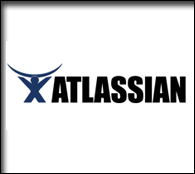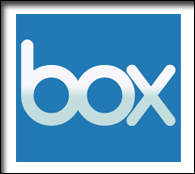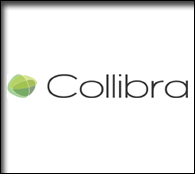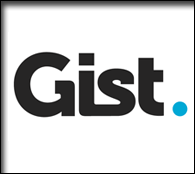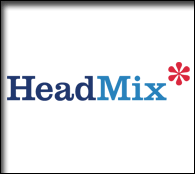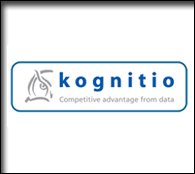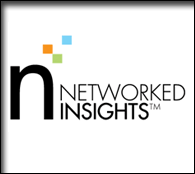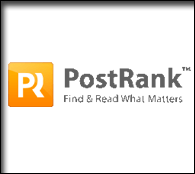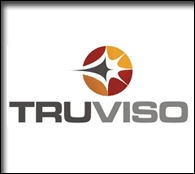Archive for October, 2009
T-minus 12 and counting
by Eric Norlin on Oct.30, 2009, under Uncategorized
We’re twelve days from Defrag, and it’s definitely not too late to get on board this rocket ship. The conversations are what make Defrag special. This was highlighted for me this morning on Twitter, when I saw Dave Fauth tweet: “Defrag is like no other conference I’ve ever been too. amazing people/conversations usually lasting way late into the night.”
Look, I can go on and on about the agenda, the people, the content, the logistics, everything - but the truth of the matter is that I cannot convey the totality of the experience if you’re not there. All I can do is speak in analogies. Remember, that one time you were in college, having a discussion at the student union (of coffeehouse or bar) about some arcane political or technical or philosophical thing, and all of sudden it seemed like a whole new world opened up and pregnant possibility was all that you could see?
Yea, it’s a bit like that. Without the keg stands, illegal substances and homework. Okay, maybe there will be keg stands. ![]()
Register today. Do something for the future of your career and community. Join us.
Woke up this morning…
by Eric Norlin on Oct.27, 2009, under Uncategorized
When I woke up this morning, I found my brain thinking (without me, apparently) about way back in the 90s. Do you remember when web pages really were static? When it was all html? Do you remember the debates about whether or not companies like General Motors even *needed* a website? (For all of you youngsters out there, there was a point in time where big companies did not believe they needed a website.) Do you remember people finally saying that having a website as a business was like “being listed in the yellow pages”….I mean, SERIOUSLY - do you remember how stupid and crazy it all sounded?
No one could’ve seen coming what we’ve got today. Dynamic, feed-driven, real-time, distributed, AMAZING web-based tools.
But here’s the thing: in ten years, the stuff we’ve got today is going to look as *silly* as the idea that GM might not even need a website. Truly. Bank on it.
And I’m willing to bet that the next 10 years will be an even *bigger* upheaval in the corporation (specifically, in the IT “department”) than the last 10 years. Hell, the last ten years aren’t gonna look like *jack* compared to the coming ten years. There might not even *be* an “IT department” in ten years.
Case studies won’t help you here, my friend — you’ve entered the zone of the unknowable future.
But there’s good news (insert famous quote) - the future is here, it’s just unevenly distributed. In other words, you can find hints, rhymes, tips, and winks. Oh, they’re out there. Clues to your very survival.
All you need do is surround yourself with amazing ideas, interactions, conversations. All you need do is break the bay area echo chamber. All you need to do is make sure that your voice is contributing to this future that we’re all already building.
Now *where*, I wonder, might you be able to do that? ![]()
Letting Sameer do the talking
by Eric Norlin on Oct.23, 2009, under Uncategorized
We’re 19 days out, and I’m swamped - so for today, I want to point to Sameer Patel’s post about why you should come to Defrag. I’ll quote Sameer at length:
I’m going to spare you a diatribe about why its a great event and distill it down to five reasons, (or fragments) that make me go back and why this an awesome event for the enterprise folks out there:
1. Its about debating solutions to big big business and economic value challenges that will consume us all over the next 12-24 months. That applies to the buy-side as well as the sell side.
2. Its about the ramifications of eventual large scale adoption of a lot of what a serious IT executive will deem to be well, “cutesy” ideas today (e.g. Real Time Enterprise).
3. A cut to the chase discussion on which consumer trends we see and use today might one day be enterprise worthy. Remember when people laughed at the concept of ‘Facebook for the Enterprise’? Yep, that probably came up at Defrag two events ago.
4. Little talk-to-the-crowd panels. Everyone is deemed too intelligent and has an equal voice. You’ll spend more time talking to the person sitting next to you than you will listening to someone on stage. Guaranteed.
5. Its frightfully practical stuff. No fluff. All actionable thinking that makes you look at work differently when you leave. And makes you want to come right back the next year.
Discuss things 18-24 months before the rest of the world stumbles upon them, interact with amazing people, walk away with your head filled with no-fluff practicality. Great stuff, Sameer!
Be sure to join us — use the code “ejn1″ for $200 off!
21 days to getting ahead of the curve
by Eric Norlin on Oct.21, 2009, under Uncategorized
Defrag is now officially three weeks away, and I’m starting to feel like a kid on Christmas eve.
But not so much the kid that I miss interesting developments - like this piece from the Gartner Symposium about IT falling “behind the curve.” Gartner argues that there’s a “fundamental mismatch” between what IT is good at and what is happening on the internet. The result is IT departments everywhere losing a grip on what’s actually going on. The “digital natives” are on iPhones, google, facebook, twitter, etc — whether you even KNOW it or not (forget liking). You no longer have 18 months to roll out a collaboration suite. People are routing around the steady pace of the IT department and “rolling their own.”
This is all really just a continuation of what happened when Salesforce.com first launched. IT people everywhere were simply STUNNED by the idea that Billy Joe down in business unit X had simply *bought himself* a license, uploaded sales data, and started using a service that no one had vetted OR approved. Guess what? That’s now everything. And it’s exploding. And it’s only gonna get worse.
The big question in the SaaS world for the last few years has been “how to keep control” - where control means compliance, security, auditing, etc. You can just feel that wave of compliance/audit/security sweeping toward all things in the social computing world (it may be the thing that pushes us into the trough). Look for it next year.
See, and that right there is why if you’re on the fence about Defrag, you should hop off and come join us. Because if you’re anywhere CLOSE to thinking about these issues (and how they intersect with so many other technology touch points), then you need to start seeing what’s coming next.
I’ll try to avoid the “rah-rah” speech, other than to say just how proud and excited I am about this year’s agenda. If you haven’t taken 5 minutes to just look through it, please do so. It’s not your typical agenda.
Come to defrag and find yourself stretched, grounded, inspired and challenged, but mostly, find yourself ahead of the curve. Join us.
The “Rise of the iPhone” analogy
by Eric Norlin on Oct.17, 2009, under Uncategorized
Recently, I’ve been writing about the new innovation cycle that I think we’re in/entering, and pointing to articles that outline issues/metaphors we’ve been chatting up at Defrag for a couple of years now. But I’ve left off a piece of things in this new cycle because I haven’t had a good way to talk about it. That said, let me see if I can fumble through this…
The new innovation cycle — which is focused around a productivity boom and magnified by a jobless recovery- has two primary “sides” to the coin: the move to the cloud and leveraging the human aspect of the business process. There are two REALLY strong bridges or ties between these two sides of the coin, and they’re both illustrated by what I’ll call “the rise of the iPhone” analogy.
By any account, the iPhone has changed the way we interact with mobile devices. And, as is often the case, its rise will cause an explosion of secondary competitors (Android, Palm Pre, etc) — with the most likely scenario being that one of the secondary competitors actually turns out to the be the “winner” (that’s just history rhyming). However, what’s key for what I’m concentrating on here is the WHY of the iPhone’s success. And I think that comes down to two underlying factors:
1. The move to the cloud: It is now getting easier and easier (and making more and more sense) to have nearly every bit of “productivity software” in the cloud. Documents, spreadsheets, email, twitter, IM — even companies like Socialcast - all in the cloud and on the iPhone. That move, coupled with a new level of ease of use on the device, has people like me (and believe me, I am a LATE adopter on this) finally starting to think that I can envision a day where the mobile device is my *primary* work tool.
2. The app marketplace: The real reason the iPhone exploded wasn’t the phone - it was the application marketplace. Remember, software doesn’t sell, APPS SELL! And the “app marketplace” is a broad, new and emerging concept that is getting widespread exposure to people everywhere. What happens next? Employees wondering why there isn’t an “app marketplace” for IT in the enterprise. I can hear it already, “you know, like in the iPhone” — at which point the IT guy rolls his eyes and launches into something about it “not being that easy.” But what if it is? Or more importantly, what if -whether it’s easy or not — it’s the future of work.
The tie between the “cloud” side and the leveraging of the human aspect of the business process side lies buried in this “rise of the iPhone” analogy. Think mobility (cloud) and multiply it by application marketplaces (both internal and between enterprises).
That boom you heard was productivity.
I don’t know exactly how we get there, or exactly where this goes, but I do know that if you’re not at Defrag, you’re late to the game on this one (we just added Danny Kolke from Etelos to the agenda to talk app marketplaces). Join us — or find yourself being a follower not a leader.
Defraggy stuff
by Eric Norlin on Oct.15, 2009, under Uncategorized
I spend most of my time on this blog writing about conceptual defrag things, but I wanted to take a bit of time today to talk logistics, or as I like to call it, “defraggy stuff.”
Most people don’t realize that Defrag is actually run by myself and my amazing wife, Kim (hi baby!). That’s it. No staff of dozens, marketing campaigns, PR firms, and outreach of millions. I don’t say that for sympathy, but rather to let you know that when I say you get “personal touch” at Defrag, I really mean it. When you email us, you get us (directly). When you have a problem, there’s no one to “elevate” it to - there’s just us to go solve it. Bottom-line: Truly personal service with a smile (and sometimes a dirty joke, or reference to 80s hair metal).
That said, it’s important that you know a couple of things about coming to Defrag (you ARE coming, right?):
1. Wifi and Power: I asked on twitter the other day about the coolest conference schwag you’ve ever received. Someone responded by saying - “just give us good wifi and power.” This person has, of course, never been to Defrag. GREAT wifi at defrag is a given. I’ve written extensively about it. We spend money on it. We use good people who know what they’re doing. It will happen. As for power, we place power strips at all of the tables in the general session room, and there are outlets all over the place. Wifi and power: check. NEXT!
2. Pre-conference dinners: The evening of the 10th, at 7pm, we’ll run the Defrag pre-conference dinners. Those of you that were at Defrag know exactly what I’m talking about here. We started these a couple of years ago, and they are one of the highlights of the show. Basically, we have 4 dinners that divide into groups of 4 (so, roughly 100 people total). Four sponsors take their group of 25 out to dinner to have a conversation around a broad topic (cloud computing, or the death of email, or something). It is a wonderful opportunity to kick-start your Defrag experience by meeting 24 other like-minded folks (and have a great free meal) prior to the conference ever starting.
How do you get in? Watch your email inbox. I’ll send out the invite about 7 days before Defrag, and it is literally a rush to get in — last year, the defrag dinners booked solid in under 5 minutes (no joke). Of course, if you don’t make it in, you can always join me in the hotel bar — as my set-up responsibilities prevent me from heading offsite for the dinners (but not from slipping downstairs for an adult beverage).
3. The Evening Reception: At the end of Defrag day 1, Chris Sacca and Chris Shipley are going to have an on-stage conversation reflecting on everything they’ve heard/learned that day. It’s a perfect lead-in to our evening reception - my favorite part of the conference. Ice sculptures, an open bar, great appetizers — and all of it leading to further networking with folks that you’ve met. Dig in!
4. Before, During and After: A bunch of thing fall under this category. First off, EventVue — which is the social networking service we’ll launch for the conference. Folks from last year are already clamoring for it, and it is by *far* the best tool I’ve ever seen for discovering and making contacts at an event like Defrag. Be sure to spend time on EventVue once we launch it.
Second, there are a bunch of random activities that you might be interested in. For example, I’ll be launching a cab-sharing wiki to help folks split the cost to/from Denver International Airport. Also, we’ve got a group of runners and cyclists that is assembling - look for a way to connect with them for a pre-conference, morning run or bike ride in Denver. Lastly, there are whispers of people staying over to go skiing. I don’t know if that’s gonna happen or not, but stay tuned.
5. Bottom-line: Defrag is, first and foremost, about the interactions. Interactions around what’s on-stage (which you simply will NOT find anywhere else); interactions between attendees; interactions before, during and after. We’re doing everything we can to make Defrag unlike any other event experience you’ll have this year. Forget convention centers and loads of people you’ll never hav the opportunity to meet - after you’ve been to Defrag this year, coming back should feel like meeting old friends for a drink to discuss all of the exciting things on the horizon.
You won’t get it unless you attend. I can’t explain it, you must experience it. Join us.
Is the “email era” over?
by Eric Norlin on Oct.12, 2009, under Uncategorized
The Wall Street Journal has a piece this morning titled, “The End of the Email Era.” The piece isn’t anything new for Defrag attendees, though I do think it’s another important “marker” in where we are on the overlay. The questions it raises, however, are spot on for what we’re all about at Defrag.
To review:
1. Let’s spend some time thinking about the metaphor that is “email.” After all, metaphors limit what we can actually *do* with things. Email is a simple, but powerful metaphor: I send you “mail”; you send me “mail” back. It’s so easy Grandma can do it!
[sidenote: I had a really interesting exchange last week about whether there was a center of "pragmatist gravity" at Defrag. I, of course, argued "yes" - but that it came from a very different place. Defrag's pragmatism begins at the most strategic of strategic places - metaphors - and then works its way down into practice (good ole "praxis"). The result, I think, is unique.]
2. Whether we are conscious of it or not, we’re already building metaphors around the “new communication systems” — web of flow, real-time stream, push-button web, synaptic web, etc. It’s all largely a sign of how early we are in this cycle, as no term seems to immediately “click,” which is just an indication of the fact that the underlying metaphor is still being formed.
3. Innovation is occurring. Google’s Wave is the obvious example, but the more “developed” examples include every thing from Gist to Socialcast, and folks like Brad are pretty actively seeking out how to use “personal dashboards” to sort all of this.
All of which brings us back out to the “big issue” — email has been the “messaging bus” for people’s communication lives. We’re now exploring different messaging systems (synchronous, asynchronous, etc), but they are NOT JUST messaging systems. They’re how we organize, process, filter and collaborate around tons of data. This “email era” questions spans a spectrum of interactions - from 1 to 1 communication to teams of 50 (or up) working collaboratively around projects, and back down to individuals that are looking for appropriate dashboards.
The big issue isn’t one of “dead or alive” for an era. Sure, we may be moving past the “email era,” but I don’t believe that we’re moving into a new dominant era yet. There is no solidifying metaphor.
So, in the meantime, we’ll be in this liminal state - halfway between and struggling through option after option and partially formed metaphor after partially formed metaphor. It won’t be wholly satisfying, but it will be what we have to dig our way through — until someday, someone says something resembling, “you know what this is like? it’s like when I mail you a letter…”
You can’t sort this stuff out in solitude, and the further you can get away from the echo chamber, the better off you’ll be. Be sure to join us a Defrag.
P.S. I’d be remiss if I didn’t point out that we’ve got specific sessions at Defrag lined up to address precisely this issue.
Stating the Obvious: Gaming the Cycle
by Eric Norlin on Oct.07, 2009, under Uncategorized
Yesterday, I began to blog a bit about IT cycles. I wanted to expound on that a bit more today.
To recap: I believe we are at the early stages of a new cycle in IT innovation (specifically, enterprise IT). The new cycle can be called a “productivity boom,” and it is being amplified by what is now clearly a jobless recovery (that I’d argue will stay that way). This “meta-cycle” has two main components - the movement to the “cloud,” and the leveraging of the human aspect of the business process. Both aspects of this meta-cycle reinforce the larger “arc” of productivity. Defrag addresses the enabling infrastructure of the cloud, and focuses squarely on the leveraging of the human aspect in business. There are three core pieces to leveraging the human aspect in the business process: the customer facing segment (”social media”), the internally facing segment (collaboration or “enterprise 2.0″) and the partner facing segment (we don’t have a buzzword for this yet, other than the catch-all “cloud” stuff).
That said, let me unpack things a bit more.
Cycles are funny things. If you look at a enough of them, you can figure out what the “tells” or clues that give away their ending and beginning are. For instance…
Oracle buys Sun.
That is as about as clear a signal as you’ll ever get that an IT cycle is ending. And when one IT cycle is ending, you can be nearly certain that a new one is beginning (even if you can’t fully see it yet).
What makes me certain that we’re entering a new cycle for IT are big picture trends combined with small anecdotes that make bells ring in my head. For example, I have a friend in a large enterprise who always seems to be on the cutting edge of whatever IT cycle we’re in (he just gravitates toward it naturally, and *always* gets tasked with “spearheading a project”). It happened last time around during the “automation” cycle, and like clockwork, it’s happening this time around, as he’s been tasked with “figuring out that ’social’ stuff” — where “social” means everything both internally and externally facing.
When I combine that anecdote with what are clear trends in “social media” and “enterprise 2.0″ (quoting because i can’t stand the buzzwords), the cycle is pretty damn obvious.
The next steps in the cycle can be better understood by taking a look at an overlay I’ve created. The overlay uses Geoffrey Moore’s famous “crossing the chasm” graph, and then overlays Gartner’s also famous “hype cycle” graph. (Sidenote: both of these graphs prove that you can make a boatload of money if you can come up with a really descriptive visualization of a trend.)
Uploaded with plasq’s Skitch!
Combining the two graphs (whether they’re meant to be combined or not) is actually pretty informative.
I’d argue that our current cycle is exiting the “technology enthusiast” phase and heading into the “visionary” adoption phase. We can see this via large-scale deployments that are occurring in both the social media and enterprise 2.0 world. That means (if my overlay holds even a kernel of truth) that we’re simultaneously nearing Gartner’s “peak of inflated expectations,” and heading toward the eventual trough of disillusionment and chasm.
Whether or not we’ve actually hit the “peak” yet is something that I’m personally debating. In cycles, there tends to be a moment in time when an event (an acquisition, or a magazine cover, or something) can be looked back on and pointed to as “that’s when the hype peaked.” I haven’t seen that yet.
What is clear is that we’re most assuredly heading up that left side of the curve towards the peak. And once reached, there’s only one clear direction - into the trough. This is why I’ve made some comments on Twitter as of late that I think we’re heading for the trough. Once the peak is reached, you can roughly anticipate that the trough will occur 12-18 months later.
So, you know it’s coming, does that in *any* way lessen the impact of the cycle? Of course not. The rise in the hype cycle that corresponds to the approaching of the chasm speaks as much to the development of the technology and how it correlates to what is necessary for mainstream adoption as anything else. All of which brings me to my next graph…
This is Clay Christenson’s “Innnovator’s Dilemma” graph.
Uploaded with plasq’s Skitch!
I didn’t overlay this on to the other two graphs, as it was just a bit too confusing. However, my suspicion is that the point where the “disruptive technology” line crosses the “medium quality use” line correlates to the fall into the trough of disillusionment on the gartner curve, and the chasm on the moore graph.
When you add these three things up, you can clearly see a point in the IT cycle where expectations exceed the capabilities of technology (ie, “quality”) and the accompanying “disillusionment” represents the “chasm” that must be crossed for mainstream adoption to occur. All of which is a way of saying that we’re *early* in this current cycle.
The longevity and true power of the current IT cycle comes on the other side of the chasm, on the other side of the trough, on the other side of making the jump from medium quality use to high quality use. And the sheer dollars that are going to drive this cycle explain why I can be less than optimistic about the overall macro-trends in our economy, while maintaining an almost excessive optimism about the growth that we’ll see in this sector of the technology world.
Therefore, the next twenty-four months are pretty critical. They’re critical for the vendors in the space, as they try to move their products/services across that chasm. They’re critical for the community at large, as we collectively define, scope out and chart the direction of the “solution set.” And they’re mission critical for the IT professional, as they need to get a really good grasp of the strategic landscape (and land mines), lest they find their careers falling rather precipitously into said chasm.
The quickest sure-fire path to chasm failure is to not see the totality of the cycle at hand. If you focus too narrowly on only one aspect, you’ll improperly scope the design of your goals, not account for the other 2/3rds of the equation, and find yourself in the purgatory that is the chasm. That’s why I’m particularly heartened by the formation of groups like The Dachis Group and The Altimeter Group — consultancies (for lack of a better word) formed specifically to see the totality of the problem (and another sign of where we are in the cycle).
In closing, let me ground this around Defrag just a bit.
At first glance, the Defrag agenda can look at bit happenstance. After all, we’re talking about everything from “productivity cycles” with Andy Kessler to The Cluetrain Manifesto (with an author reunion). Believe me, the agenda is not thrown together, nor is it happenstance.
The defrag agenda is built very specifically to spur on interaction and conversation around three key areas:
1) The customer-facing side of this “meta-cycle” — as seen in sessions around social media, conversations, the open web and the real-time stream.
2) The internally-facing side of the cycle — as seen in sessions focused on collaboration, messaging metaphors, discovery and intelligence and data management.
3) The cloud/partner-facing side of the cycle — as seen in sessions on enabling infrastructure and identity.
If you come to defrag, I cannot promise that you’ll hear about the magic solution that can be presented in a case study that will solve all of your problems. But I can promise that, collectively, we’ll all begin to interact around the strategic hurdles that must be overcome as we head over the peak of inflated expectations and toward the chasm.
Not preparing yourself for the coming, know-able, and “game-able” steps in this IT cycle is like walking blind-folded into a field of land-mines.
Don’t do it alone. Join us at Defrag.
Understanding the human IT cycle
by Eric Norlin on Oct.06, 2009, under Uncategorized
I’m a big believer in cycles - including ones in the world of technology, and especially when it comes to IT in the enterprise.
It seems to me that the last enterprise IT cycle- which I’d peg as running from roughly 2001 through 2008 — has a pretty clear story arc: automation. Spurred on largely by things like Sarbannes-Oxley, the great majority of enterprise IT software sought to “automate” business processes, which is to say it sought to *remove* humans from the process.
The automation cycle did not result in a productivity surge (as you would’ve thought it might), as much of it was having to deal with new regulation. However, large segments of the automation cycle (CRM, Authentication, etc) did result in an increase in efficiency or a reducing of costs.
Similarly, I think we’re now entering a new enterprise IT cycle — running roughly from 2008 through 2015 — that also has a pretty clear story arc. However, whereas the last cycle sought to remove humans from the business process (via automation), this cycle is seeking to *leverage* (and reinsert) humans in the business process.
As with all cycles, the story arc is simple, but incredibly powerful. The idea that IT is going to spend the next seven years figuring out how to truly leverage the human aspect of business processes opens up a HUGE opportunity (for both vendors and enterprises). That opportunity spans customer-facing segments of the business (social media), employee facing segments of the business (enterprise 2.0), and partner-facing segments of the business (we have no “term” here yet). And it builds upon topics like the semantic web, identity, community, messaging, conversations, discovery, data management, the open web, and enabling infrastructure.
Sidenote: I *know* some folks are going to argue the cloud computing is actually the trend for the next seven year cycle. I don’t disagree. I actually think that “the cloud” and “the human leverage” cycles are running in parallel, and part of a “meta-cycle” in IT that we haven’t properly named yet (but is all focused around the productivity surge that our current economic cycle is emboldening).
What does all of this mean? That if you’re in enterprise IT, you’ll need to do a couple of things to be prepared:
1. Think strategically. Don’t get bogged down in the trenches. Sure, you need well-defined projects with clear ROI. Yes, the devil is in the details. But isn’t that obvious? The “non-obvious” - namely, the strategically motivated curves in the coming road are what you need to get ahead of. Driving the car well does you no good if you’re driving it off the road.
2. Don’t get lost in the terminology. We can go back and forth on what all of this is called, what’s a crock, what’s not, etc. Move past that. What you want to focus on are meta-frameworks; big picture tools that can help you place all of *your* specific needs into the right prioritization. That has nothing to do with terminology -which always subjugates *your* needs to some pundit’s buzzwords- and everything to do with a deep and comprehensive understanding of the tectonic plates moving beneath you.
3. Focus on Innovation. The innovator’s dilemma made this point abundantly clear: if you depend solely on vendors to point the way, you will end up creating a destructive echo chamber (as they’re most likely depending on you). What you *need* to focus on is innovation. The little-heard idea. The entrepreneur that might never succeed, but can spur a thought in you that opens up a new direction. The conversations and networking opportunities that are *built* to see around corners.
Having said all of that, take a look at the defrag agenda. And keep in mind, it’s not done yet.
Defrag will move you out in front of the waves of this IT cycle. It will keep you ahead of your peers (by the very nature of Defrag’s intimate nature). And it will be one of the most valuable experiences you’ll have as you move toward planning for 2010.
Don’t miss out - use the code “ejn1″ to receive 10% off of the registration price - and register to join us today.
